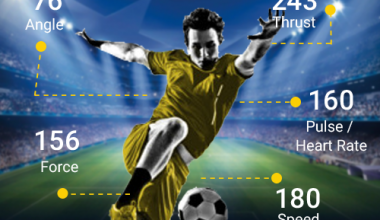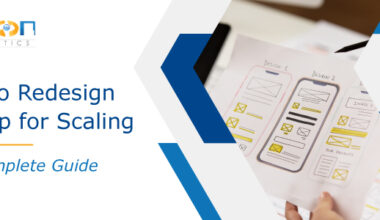
The number of devices that are connected across the globe is staggeringly high and will grow exponentially in the years to come. The extent of connectivity while seen as a major inconvenience in the late 20th century, is the dominant truth of the 21st century world. Business are global and with a presence that is so widespread it is essential that organisations are able to communicate with and control their operations around the world in real-time. This is where the importance of Internet of Things (IoT) becomes difficult to miss. The diversity and intensity of applications of IoT has been sharply increasingly across the global corporate ecosystem. The fact that IoT is malleable and can be designed to suit the specific needs of the organisations, makes it the transformative force in for the future. The mere existential requirement of IoT in business makes it impossible for organisations to grow without embracing the technology.
IoT Enabled Workforce
The major hurdle in the process of adopting IoT would be the fervour with which the employees accept the co-existence technology with existing manual processes. The perception of the workforce towards IoT, and how the company manages the evolution of the workplace culture is essential in the successful integration of IoT in organisations. Workplace cultures would have to be transformed to address the loss of flexibility in job profiles, loss of complete manual control, fear of job loss, and the need to acquire new skills. IoT integration would require the companies to renew their performance appraisal metrics also. Thus, the companies will have to realign their human resource policies to integrate the changes that IoT would bring in. It is evident that the inherent leadership policies of the company would have to be the starting point of the change. The major impact that IoT would have on organisation would include the automation and digitisation of large proportion of the organisation’s daily operations and functions. The leadership will have to be prompt in adapting their management styles to suit a largely digital workplace. Promoting a culture of innovation will also have to be a priority of the organisation for a seamless integration of IoT into the workplace.
New Business Opportunity
IoT will help businesses collect and collate a stream of data that is larger and more complicated than ever. The information collected through IoT, and the analytics of them would help them company find new business opportunities. Data through IoT is also capable of providing market insights that would allow the organisation to develop marketing plans that are strategically designed to create favourable aspects for the company. The data from IoT can be overwhelming at the very least, therefore it is essential that the organisation uses impeccable analytics to ensure that they gain maximum. The integration of IoT in the organisation, thus, would require the company to have the resource and strategic acumen to use these leads to their benefit — ensuring that the impact of IoT is neither reduced nor nullified due to peripheral causes.
Impact on Workplace
The introduction of IoT in the workplace will change the core of the organisation — its standard procedures, daily operations, and larger functions. While the fear associated with IoT is of reducing the number of jobs due to automation, there is one area where jobs will increase — digital experts. Every company that wished to enter the maze of IoT will have to pay close attention and find ways to improve the digital knowledge of their employees. Digital literacy and data analytics will most likely become the top most priority of organisations investing in integrating IoT in a meaningful way.
IoT can also have a positive effect on the safety parameters of the company. IoT can be used to employ sensors that would help monitor hazardous areas in the workplace or common high-risk processes. The technology can be used to maintain monitor, review, and maintain safety in areas of the organisation — thus reducing the chances of human error. The technology can also be used to study the entire gamut of accident and safety records to identify patterns, recognise problem areas, and find preventive mitigation processes. IoT can also be used to impeccably record every safety procedures conducted in the workplace, collate them with the required legislative requirements, and alert the organisation regarding non-compliances to statutory regulations or upcoming renewables.
Above all, IoT will positively improve the productivity at the organisation. The introduction of robotics in an organisation will help the company to eliminate repetitive physical tasks through the adoption of automation. The ‘cognitive outsourcing’ enabled by IoT will allow the company to free the manual workforce from menial mental tasks, and allow them to work towards improving other aspects of the organisation’s functions. This can be transformative, since employees could help recognise essential insights into the organisational operations when they are not busying collecting and processing data.
IoT can also be skilfully used to create databases that could help digitise the institutional knowledge of the retiring generation of baby-boomers and make it easily accessible for the working millennials and further for the Gen-Z and Gen-Alpha.
IoT, experts believe, will also have a transformative impact on the way business is done. Organisations will have to allot lesser and lesser time for meetings over menial matters and meet only for exceptional reasons that would help the company grow. The employees will also be able to access all important data effortlessly making it simple for them to finish their jobs without having to wait for data to be processed and analysed.
It is essential to understand that IoT will soon become the norm for organisations across industries making it impossible for organisations that shun it now to even exist in the future.
Conclusion
The integration of IoT into organisations not only refers to the wide-scale adoption of new technology; but is related to a transformation of the thought associated with how the organisation should function. It is essential that organisations manage this massive change in association with experts to direct the way.
About Fusion Informatics
IoT is a maze that requires some skilful navigation to ensure success. We, at Fusion Informatics, offer just that. We realise the amount of power that IoT wields for the organisations of the future. Our team of experts are skilled to harness that very power to ensure that our clients are ready for the challenges and opportunities of the evolving 21st century market.
We are a leading service provider, and an expert in IoT technologies. We ensure that for organisations looking for transformative experience in integrating latest technology in their organisation, Fusion Informatics is a one-stop destination.



